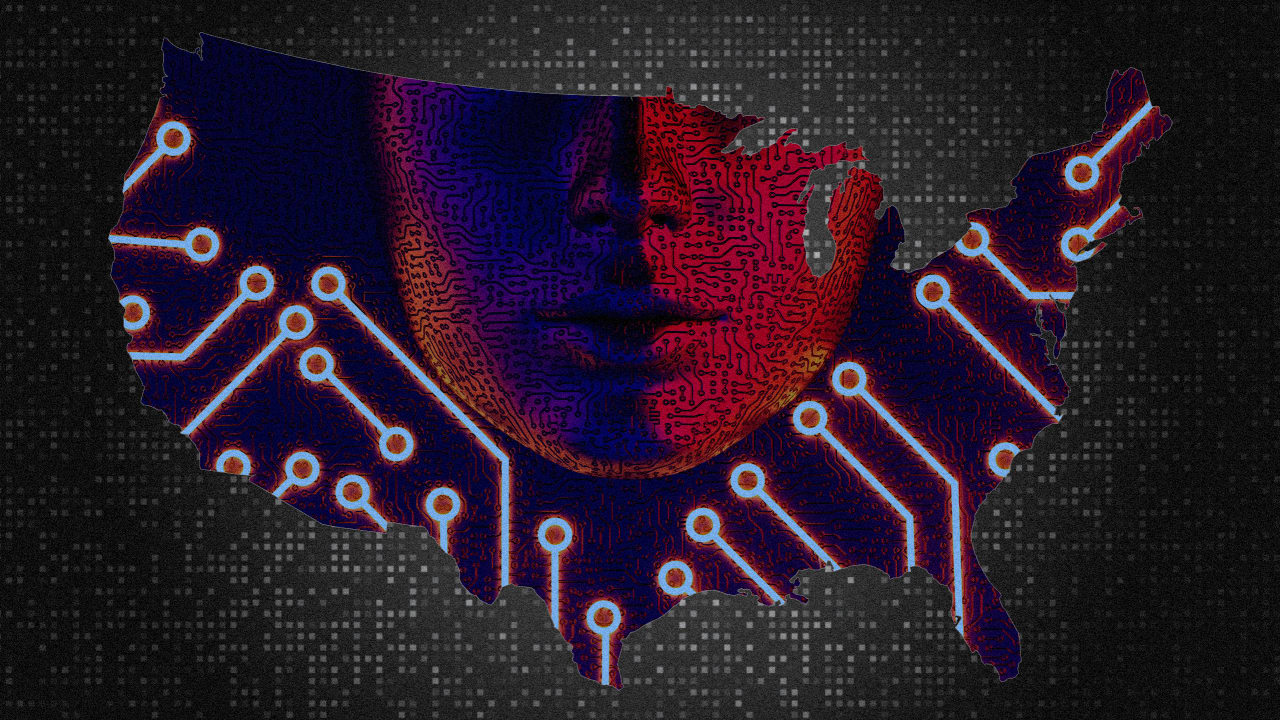The debate over state-level AI bans misses the point
Both sides are missing the point entirely as Congress debates the proposed 10-year ban on state AI laws contained in the “Big, Beautiful Bill.” The current wrangling over who should regulate privacy, deepfakes, and bias in AI confuses the forest for the trees because it solely focuses on who decides what we should not do. In contrast, state AI leaders from across the country are gathering this week in New Jersey to ask the critical question: What can we do to responsibly take advantage of powerful AI tools to solve our hardest problems, improve governance, and strengthen democracy? More than just another conference, the June 16 gathering in Princeton of these newly appointed senior AI leaders is a working meeting to produce concrete answers to questions like: What should government build? What should we buy? Who should own and control it? What investments should governments make to ensure we are building the technology to address challenges like climate change, literacy, and the integrity of our democracy? And how do we ensure the tools we put in schools, government agencies, and our communities are designed to improve lives? Since the Cold War, we have viewed technology as either a tool of bureaucratic control and dehumanization or an opportunity for wealth creation and profit. But as federal discourse revolves around unrestricted development or regulation, states are serving as laboratories for democratic AI innovation. So beyond black and white bans, we must expand the debate to include how we can actually improve our institutions with AI. Not just corporate-owned tools like ChatGPT, but AI tools specifically designed from the ground up for government. Ineffective government services have become a political punchline, but a growing number of local governments are using AI to improve the efficiency and effectiveness of critical services with promising results. State officials in Ohio are using AI to analyze its sprawling administrative code to cut red tape. Two centuries of accumulated regulations have created a confusing warren of obsolete, redundant, and conflicting demands that businesses must navigate, hindering progress. AI helped identify outdated requirements, conflicting rules, and opportunities for modernization including cutting 600,000 words from the building code alone, eliminating 521 rules for defunct lottery games, and moving paper-based processes online. The governor’s office estimates these changes will save taxpayers $44 million and eliminate 58,000 hours of unnecessary government work over the next decade. Meanwhile, Maryland, Colorado, Hawaii, and New Jersey have been using machine learning to analyze labor market data to provide workers with career and training recommendations tailored to their skills and hopes. In New Jersey, the Department of Labor and the Office of Innovation have used AI to help rewrite emails in plain language, which residents are responding to 35% faster. At its Affordable New Jersey Communities for Homeowners and Renters (ANCHOR) property tax relief program hotline, the state’s division of taxation has been using AI tools to analyze calls to generate better self-service menu options so residents can find what they need without waiting to speak to an agent. This has led to a 50% increase in the number of successfully resolved calls. Despite those who believe institutions can be replaced by markets or decentralized networks, democracy’s survival depends on strong, effective institutions. The task ahead is to harness AI’s power to upgrade their capacity, and next week, state leaders will do just that in Princeton. Artificial intelligence holds as much potential to bolster democracy as to harm it. It can incite division, but it can also foster civil discourse. It can spawn disinformation, but also help us identify it. We can choose to use these increasingly ubiquitous tools to reinforce our democracy, mend the tears, and strengthen the bonds. We have built extraordinary tools. But we’re not yet using them where they’re needed most: to fix our democratic institutions. What if we treated democracy like we treat cancer or carbon? Where is the National Institutes of Health of democratic trust? The Advanced Research Projects Agency–Energy of elections? So the debate around AI must extend beyond just regulation, and states are showing what is possible when we think bigger about these powerful tools and use them responsibly. It is time our federal government does so as well.

Both sides are missing the point entirely as Congress debates the proposed 10-year ban on state AI laws contained in the “Big, Beautiful Bill.”
The current wrangling over who should regulate privacy, deepfakes, and bias in AI confuses the forest for the trees because it solely focuses on who decides what we should not do.
In contrast, state AI leaders from across the country are gathering this week in New Jersey to ask the critical question: What can we do to responsibly take advantage of powerful AI tools to solve our hardest problems, improve governance, and strengthen democracy?
More than just another conference, the June 16 gathering in Princeton of these newly appointed senior AI leaders is a working meeting to produce concrete answers to questions like: What should government build? What should we buy? Who should own and control it? What investments should governments make to ensure we are building the technology to address challenges like climate change, literacy, and the integrity of our democracy? And how do we ensure the tools we put in schools, government agencies, and our communities are designed to improve lives?
Since the Cold War, we have viewed technology as either a tool of bureaucratic control and dehumanization or an opportunity for wealth creation and profit. But as federal discourse revolves around unrestricted development or regulation, states are serving as laboratories for democratic AI innovation.
So beyond black and white bans, we must expand the debate to include how we can actually improve our institutions with AI. Not just corporate-owned tools like ChatGPT, but AI tools specifically designed from the ground up for government.
Ineffective government services have become a political punchline, but a growing number of local governments are using AI to improve the efficiency and effectiveness of critical services with promising results.
State officials in Ohio are using AI to analyze its sprawling administrative code to cut red tape. Two centuries of accumulated regulations have created a confusing warren of obsolete, redundant, and conflicting demands that businesses must navigate, hindering progress. AI helped identify outdated requirements, conflicting rules, and opportunities for modernization including cutting 600,000 words from the building code alone, eliminating 521 rules for defunct lottery games, and moving paper-based processes online. The governor’s office estimates these changes will save taxpayers $44 million and eliminate 58,000 hours of unnecessary government work over the next decade.
Meanwhile, Maryland, Colorado, Hawaii, and New Jersey have been using machine learning to analyze labor market data to provide workers with career and training recommendations tailored to their skills and hopes. In New Jersey, the Department of Labor and the Office of Innovation have used AI to help rewrite emails in plain language, which residents are responding to 35% faster.
At its Affordable New Jersey Communities for Homeowners and Renters (ANCHOR) property tax relief program hotline, the state’s division of taxation has been using AI tools to analyze calls to generate better self-service menu options so residents can find what they need without waiting to speak to an agent. This has led to a 50% increase in the number of successfully resolved calls.
Despite those who believe institutions can be replaced by markets or decentralized networks, democracy’s survival depends on strong, effective institutions. The task ahead is to harness AI’s power to upgrade their capacity, and next week, state leaders will do just that in Princeton.
Artificial intelligence holds as much potential to bolster democracy as to harm it. It can incite division, but it can also foster civil discourse. It can spawn disinformation, but also help us identify it. We can choose to use these increasingly ubiquitous tools to reinforce our democracy, mend the tears, and strengthen the bonds.
We have built extraordinary tools. But we’re not yet using them where they’re needed most: to fix our democratic institutions. What if we treated democracy like we treat cancer or carbon? Where is the National Institutes of Health of democratic trust? The Advanced Research Projects Agency–Energy of elections?
So the debate around AI must extend beyond just regulation, and states are showing what is possible when we think bigger about these powerful tools and use them responsibly. It is time our federal government does so as well.


































































![https //g.co/recover for help [1-866-719-1006]](https://newsquo.com/uploads/images/202506/image_430x256_684949454da3e.jpg)

























![[PATREON EXCLUSIVE] The Power of No: How to Say It, Mean It, and Lead with It](https://tpgblog.com/wp-content/uploads/2025/06/just-say-no.jpg?#)



















































